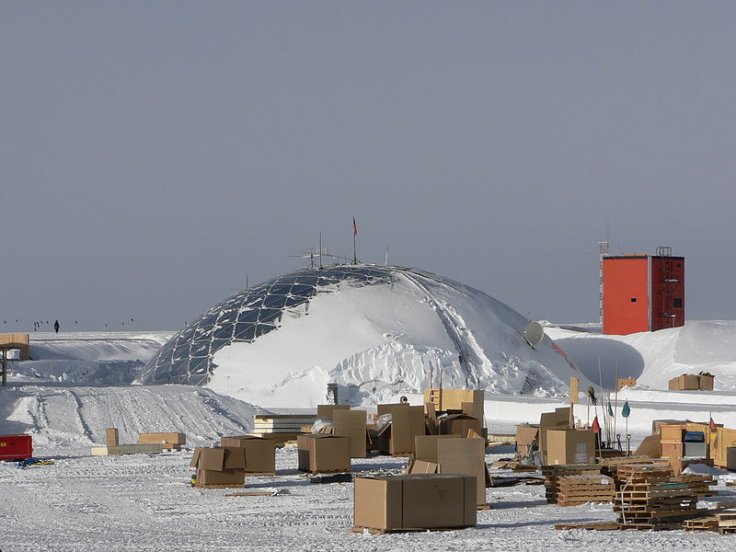When it comes to the world's remote buildings, the names which come to your mind are Bishop Rock lighthouse, Svalbard Global Seed Vault, Halley Antarctic Research Station and Sphinx Observatory. But do you know that some of these isolated places are the nursery of some advanced research programs?
Examples like Amundsen-Scott South Pole Station, located at the bottom of the globe, provide an opportunity to study seismology, air quality and even the birth of the universe in ways that are impossible in other parts of the world. Here is how the establishment conducts some of the world's most advanced research:

Ceremonial South Pole
It is an area set aside for photo opportunities at the South Pole Station. Each year it shifts 33 feet towards the Weddell Sea, moving the decorative flagpole farther from Earth's geographic bottom.
Skiway
During the southern summer, military planes transport the researchers to and from respective places while being equipped with skis and rockets. But after the temperature goes down air traffic halts.
Elevated station at the location
Amundsen is not just a building as it has a greenhouse for growing food as well as a sauna for warming up after winter. The building is located on hydraulic stakes. The hydraulic stakes allow snowdrifts to pass beneath and that can boost the station if too many flakes accumulate.
Water & sewage pipes
The installed pipes bring up the water freshly melted by the base's power plant. If once well runs dry, the researchers construct a new one along the line.
Quietest sectors
Instruments buried hundreds of feet beneath the ice track seismic waves that ripple across Earth. This helps the researchers to understand how fast and systematically the continent moves.
Why it is an ideal post?
This extremely cold and dry area along with its high altitude helps the scientist study the night sky properly. It should be noted that the telescope captures several natural phenomena that are undetectable from most other parts of the planet.
The Observatory
Thanks to the perfect balance between water molecules in the vast untouched polar ice, physicists have a clear view of the resulting bursts between atoms and neutrinos, high-energy subatomic particles
In addition, it can be stated that compared to other regions on earth since the South Pole generate less pollution. However, Sensors at the lab get a highly accurate picture of greenhouse gases from Amundsen which is crucial for tracking the progress against climate change.









